What is folliculitis barbae?
Beard folliculitis is a type of folliculitis that affects the beard area due to infection with the bacteria Staphylococcus aureus. It occurs in men who shave and men who do not shave. Deep beard folliculitis is called beard sycosis and produces scars and permanent areas. hair lost.
Barbae folliculitis

Barbae folliculitis
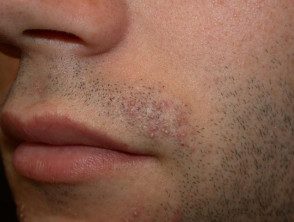
Barbae folliculitis

Barbae folliculitis

Barbae folliculitis
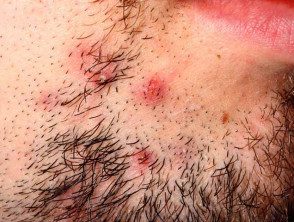
Barbae folliculitis

Barbae folliculitis
Sycosis barbae

Sycosis barbae
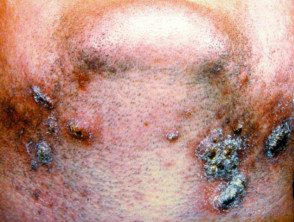
Sycosis barbae

Sycosis barbae
What is beard pseudofolliculitis?
Pseudofolliculitis of the beard is a foreign body inflammatory reaction surrounding ingrown facial hairs resulting from shaved off. It can also occur anywhere on the body where hair is shaved or plucked, including armpit, pubic area and legs. Also known as shaving eruption or razor bumps.
Beard folliculitis and beard pseudofolliculitis can coexist.
Pseudofolliculitis of the beard
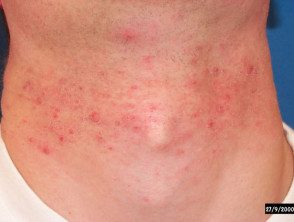
Pseudofolliculitis of the beard
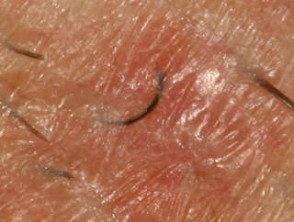
Ingrown beard
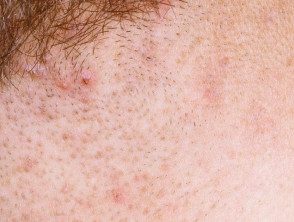
Pseudofolliculitis of the beard

Pseudofolliculitis of the beard
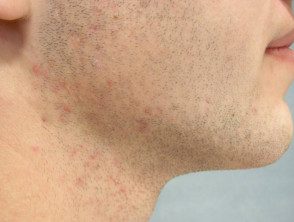
Pseudofolliculitis of the beard
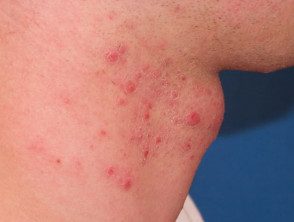
Pseudofolliculitis of the beard
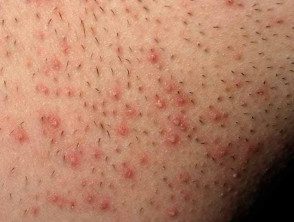
Pseudofolliculitis of the beard
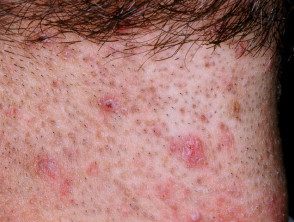
Pseudofolliculitis of the beard

Pseudofolliculitis of the beard
Who gets barbae folliculitis and pseudofolliculitis barbae?
Predominance offolliculitis barbae and pseudofolliculitis barbae it is higher among men of African descent than among Caucasian men. Both disorders can also affect women of all races. They are associated with improper shaving practices and are more common when using a razor blade instead of an electric razor.
Recent research has confirmed a genetic predisposition at pseudofolliculitis in tthe african population. A single nucleotide hair replacement follicle specific layer mate curb (K6hf) is shown to increase the chance of pseudofolliculitis barbae.
What causes pseudofolliculitis of the beard?
Pseudofolliculitis of the beard is due to shaving, particularly close shaving, because cut hair can retract below the surface of the skin. It can also occur in skin folds and scars. It mainly occurs in people with curly hair because curling the hair means that the pointy, sharp end of freshly shaved hair comes out of the skin and re-enters the skin nearby causing a foreign body inflammatory reaction.
The wounded follicles They are highly susceptible to infection, causing folliculitis barbae.
What are the characteristics of pseudofolliculitis and folliculitis of the beard?
After shaving, patients may experience similar acne. eruption in the area that has been shaved, usually the men's face and neck.
- The involvement of the skin under the jaw is typical, a site where the hair follicles grow in various directions.
- Pseudofolliculitis of the beard occurs as ingrown hairs associated with flesh-colored or red follicular papules, which can cause itching or tenderness.
- Beard folliculitis presents as painful pustules and can download pus.
- Injuries can bleed when shaved.
Beard folliculitis and pseudofolliculitis are aggravated by coexistence eczema/ /dermatitis.
What are the complications of folliculitis and pseudofolliculitis of the beard?
Complications of folliculitis and pseudofolliculitis of the beard include:
- Post-inflammatory hyperpigmentation
- Hypertrophic scar formation and keloids
- Temporary and permanent hair loss.
- Sycosis barbae - sinuses, abscesses and spread of infection due to infection and autoinflammatory reaction
How is pseudofolliculitis of the beard and folliculitis of the beard diagnosed?
Pseudofolliculitis of the beard is a clinical diagnosis. A magnification, for example dermoscopy, may be necessary to view ingrown hairs. Barbae folliculitis is diagnosed by the presence of painful pustules.
Swabs can be taken to bacterial culture but they are rarely necessary.
Which is the treatment?
Treatment for pseudofolliculitis of the beard depends on the severity of the condition. If possible, grow your beard for 30 days to remove ingrown hairs. When you're ready to shave again, take the following precautions:
- Make sure the skin is well hydrated, for example using a lotion containing Glycolic Acid to the affected areas. This exfoliates the superficial cells of the skin and reduces the probability of new inflamed spots.
- Clean the skin with a polyester skin-cleaning pad or a hydrating shaving foam.
- Try to have a shadow at 5 o'clock immediately after shaving. Shave less frequently, for example every other day.
- Use a single blade disposable razor or use electric razors or a razor with an attachment that will leave cut hairs long.
- Shave in the direction of the follicle, not against it. Do not stretch the skin.
- Sterilize metal hair clippers and electric razors with boiling water, and plastic items should be soaked in an antiseptic solution.
Medical treatment for pseudofolliculitis barbae
- Hydrocortisone cream can reduce slight inflammation and itchy
- Current acne treatments how benzoyl peroxide and tretinoin are used to suppress follicular hyperkeratosis.
- A combination of tretinoin, low-potency topical corticosteroid, and hydroquinone may be selected to decrease inflammation, hyperkeratosis, and pigment production.
- Oral tetracyclines are used to reduce inflammation.
- Photodynamic The therapy has been successful.
What is the treatment of beard folliculitis?
Since beard folliculitis and beard sycosis are due to a bacterial infection, they are treated with topical or oral antistaphylococcal antibiotics..
How is beard pseudofolliculitis prevented?
To prevent reappearance, follow a proper long-term shaving regimen and consider waxing. The methods may include:
- Eflornithine cream
- Chemical depilatories such as barium sulfide paste and calcium thioglycolate; these can be irritating
-
Intense pulsed light (IPL)
- To be hair removal, especially Nd: YAG and diode lasers, but there is a risk of causing white or dark colored marks on the skin.


